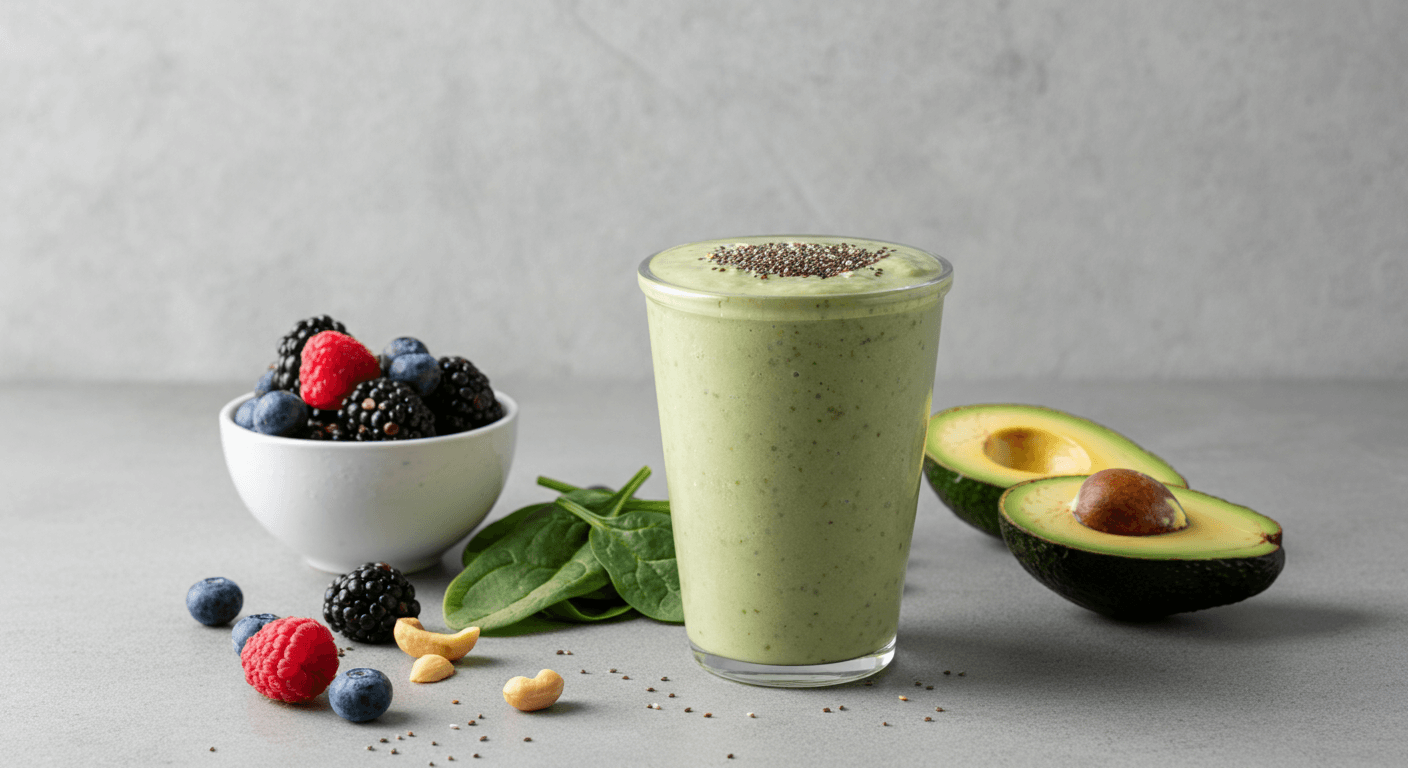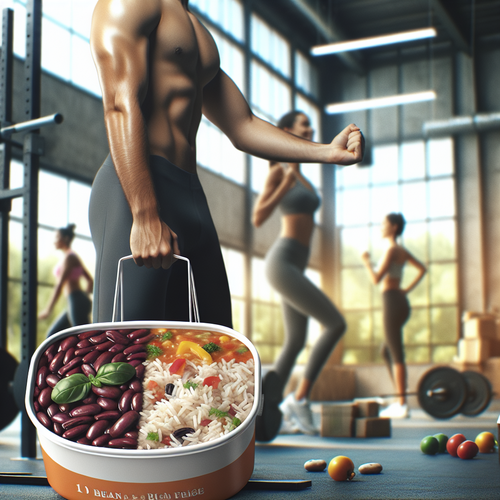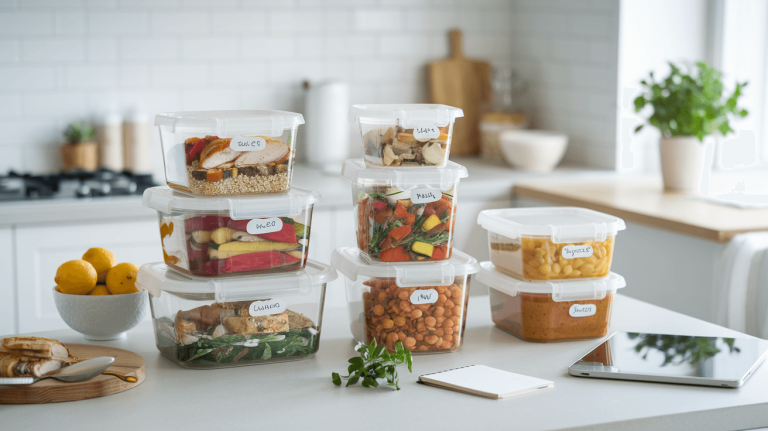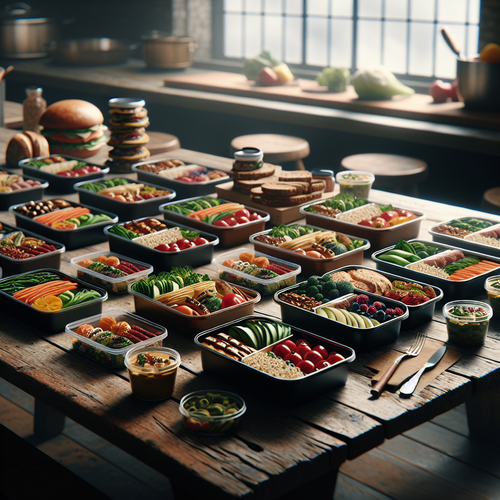The Ultimate Science-Backed Guide to Low-Calorie, High-Protein Smoothies for Weight Loss
Are you carefully managing your diet but still hitting a frustrating weight loss plateau? The secret to breaking through might be in what you drink, not just what you eat. Too often, smoothies are mislabeled as “health foods” while being loaded with hidden sugars and empty calories. But when crafted correctly, they can be a powerful tool for metabolic health.
This is not just another recipe list. This is the definitive, science-backed guide to understanding why high-protein, low-calorie smoothies work. We’ll decode the metabolic science to empower you to achieve sustainable fat loss, moving beyond simple instructions to provide a deep understanding of nutritional strategy. By focusing on the interplay between protein, metabolism, and satiety, we offer a solution that works with your body’s natural processes.
By the end of this guide, you will have a customizable framework to create delicious smoothies that control cravings, preserve lean muscle, and accelerate your weight loss journey. You’ll be equipped with the knowledge to craft endless low calorie high protein smoothie recipes tailored perfectly to your goals.
Table of Contents
- The Science of Smoothies: How Protein Powers Fat Loss
- The Ultimate Smoothie Ingredient Guide
- Your Blueprint: The ‘Build-Your-Own’ Smoothie Formula
- Goal-Specific Smoothie Recipes (Applying the Formula)
- Frequently Asked Questions (FAQ)
- Conclusion
The Science of Smoothies: How Protein Powers Fat Loss
To truly master the art of the weight loss smoothie, you must first understand the science. It’s not magic; it’s metabolism. The effectiveness of a high-protein diet hinges on fundamental biological principles that influence how your body burns calories, manages hunger, and utilizes energy. By leveraging these principles, you can transform a simple smoothie from a morning treat into a strategic metabolic tool.
Boosting Your Metabolism: The Thermic Effect of Food (DIT)
One of the most significant advantages of a high-protein diet is its effect on your metabolic rate, a concept known as the Thermic Effect of Food (TEF) or Diet-Induced Thermogenesis (DIT). This refers to the energy your body expends to digest, absorb, and process the nutrients in your food. Protein has a much higher thermic effect than fats and carbohydrates.
Your body uses approximately 20-30% of the calories from protein just to digest and metabolize it. In contrast, it only uses 5-10% for carbohydrates and 0-3% for fats. This means that if you consume 100 calories from pure protein, your body effectively only gets 70-80 of those calories. As confirmed by a comprehensive review from the National Institutes of Health (NIH), the science behind high-protein diets for weight loss shows that this increased energy expenditure can contribute to a negative energy balance, which is essential for weight loss. Integrating well-designed protein smoothies for energy and weight loss isn’t just about the calories you consume, but also about increasing the calories you burn through this natural metabolic process. Learn more about our science-first approach by visiting our team page.
Conquering Cravings: The Science of Satiety Hormones
The other half of the metabolic equation is controlling calorie intake, which is nearly impossible if you’re constantly battling hunger. This is where protein’s influence on satiety hormones becomes a game-changer. Protein significantly impacts the hormones that regulate hunger and fullness.
- Ghrelin: Often called the “hunger hormone,” ghrelin signals your brain that it’s time to eat. A high-protein intake has been shown to suppress ghrelin levels more effectively than carbs or fats.
- GLP-1, Peptide YY, and CCK: These are gut hormones that signal fullness to your brain. Protein consumption stimulates the release of these hormones, helping you feel satisfied for longer after a meal.
According to Harvard Health Publishing, this effect is particularly potent at the start of the day. A study they highlighted demonstrated how a high-protein breakfast helps control hunger throughout the day, reducing subsequent food intake and stabilizing glucose levels. This makes healthy breakfast smoothies for weight loss an incredibly effective strategy. By opting for low sugar protein smoothie recipes, you avoid the blood sugar spikes that lead to rebound hunger, creating a virtuous cycle of satiety and control.
The Ultimate Smoothie Ingredient Guide
Building the perfect weight loss smoothie is like being a chemist in your own kitchen. Every ingredient has a specific function, contributing to the overall goals of high protein, low calories, and maximum nutritional benefit. This guide breaks down the “why” behind each component, allowing you to make smart, targeted choices.
Choosing Your Protein Powerhouse
The protein source is the cornerstone of your smoothie. Your goal is to get 20-30 grams of high-quality protein per serving. According to the U.S. Department of Agriculture (USDA) MyPlate official guide to protein foods, variety is key to getting a full spectrum of amino acids.
- Whey Protein: A fast-digesting dairy protein, ideal for post-workout recovery. Whey isolate is a purer, lower-lactose option.
- Casein Protein: A slow-digesting dairy protein, excellent for meal replacement smoothies as it promotes a feeling of fullness for hours.
- Greek Yogurt (Unsweetened): A whole-food protein source that also provides probiotics for gut health. Look for plain, non-fat, or low-fat versions to keep calories in check.
- Plant-Based Proteins: For those seeking
vegan high protein low calorie smoothies, there are excellent options:- Pea Protein: Highly digestible, rich in iron, and has a complete amino acid profile.
- Soy Protein: A complete protein made from soybeans, often available as soy milk or tofu that can be blended.
- Hemp Protein: Provides protein along with healthy Omega-3 and Omega-6 fatty acids and fiber.
Smart Liquids, Fruits, and Fiber
The supporting cast of ingredients is crucial for keeping calories low and nutritional value high. Avoid fruit juices and sweetened milks, which are packed with sugar.
- Low-Calorie Liquids: Water is the ultimate zero-calorie base. Unsweetened almond milk, cashew milk, or macadamia milk are excellent creamy alternatives, typically containing only 30-40 calories per cup.
- Low-Sugar Fruits: Fruit provides vitamins and natural sweetness, but choosing the right kind is key for
low sugar protein smoothie recipes. Prioritize low-glycemic options like berries (strawberries, blueberries, raspberries), which are also packed with fiber and antioxidants. A small amount of a higher-sugar fruit like banana or mango can be used for texture, but use it sparingly. - High-Fiber Additions: Fiber is critical for satiety and digestive health.
- Leafy Greens: A large handful of spinach or kale adds immense nutritional value with almost no calories and is virtually tasteless in a smoothie.
- Chia Seeds & Flax Seeds: Just one tablespoon adds a significant amount of fiber and healthy Omega-3 fats.
Combining these elements allows you to create delicious and effective high protein fruit smoothies without overloading on sugar.
Metabolic Boosters & Healthy Fats
To take your smoothie to the next level, consider adding functional ingredients that support your energy and metabolic goals.
- Healthy Fats: A small serving of healthy fat helps with the absorption of fat-soluble vitamins (A, D, E, K) and further enhances satiety. Great sources include:
- Avocado: Adds incredible creaminess and healthy monounsaturated fats.
- Nut Butter (Almond, Peanut): Choose natural versions with no added sugar. Use a measured tablespoon.
- MCT Oil: A type of fat derived from coconut oil that is rapidly absorbed and converted into energy, making it a popular addition to
protein smoothies for energy and weight loss.
- Metabolic Boosters:
- Green Tea Extract or Matcha Powder: Contains EGCG, a catechin linked to a modest boost in metabolism and fat oxidation.
- Cinnamon: A simple spice that can help regulate blood sugar levels.
Your Blueprint: The ‘Build-Your-Own’ Smoothie Formula
Forget rigid recipes. The key to long-term success is having a flexible framework that you can adapt to your taste, goals, and what you have in the kitchen. This formula empowers you to consistently create the best high protein low calorie smoothies without guesswork. Follow these simple steps for a perfectly balanced, nutrient-dense shake every time.
The Base Formula: Base Liquid (1-2 cups) + Protein Source (20-30g) + Fiber-Rich Green (1 handful) + Low-Sugar Fruit (1/2 cup) + Healthy Fat (1 serving) + Optional Booster (1 tsp)
Here is a breakdown of how to apply it:
- Start with Your Liquid Base (1-2 cups):
Pour water, unsweetened almond milk, or another low-calorie milk into your blender first. This helps the blades spin freely.
- Add Your Protein Powerhouse (1 scoop or serving, ~20-30g protein):
Add your chosen protein powder (whey, casein, pea) or whole-food source (Greek yogurt). This is the functional core of your smoothie.
- Pack in a Fiber-Rich Green (1 large handful):
Stuff in a generous handful of spinach or kale. You won’t taste it, but your body will thank you for the micronutrients and fiber.
- Include a Low-Sugar Fruit (1/2 cup, frozen is best):
Add your measured portion of frozen berries, a few chunks of avocado, or half a small banana. Using frozen fruit makes the smoothie thick and cold without needing ice.
- Incorporate a Healthy Fat (1 measured serving):
Add one tablespoon of chia seeds, ground flaxseed, or almond butter, or a quarter of an avocado. This is crucial for sustained energy.
- Finish with an Optional Booster (1 serving or tsp):
Want more energy? Add a teaspoon of MCT oil. Want to support your metabolism? Add a dash of cinnamon or a teaspoon of matcha powder.
This customizable approach ensures you can create endless low calorie high protein smoothie recipes that never get boring and are always aligned with your weight loss goals.
Goal-Specific Smoothie Recipes (Applying the Formula)
Now let’s put the formula into action. Here are four goal-specific recipes that demonstrate the power and versatility of the blueprint. Each one is designed to serve a unique purpose while delivering a delicious, satisfying, and effective result.
The Fat-Burner: Maximum Weight Loss Smoothie
Designed for maximum satiety and minimal calories, this smoothie is a perfect example of a low calorie meal replacement smoothies designed to keep you full and curb cravings for hours.
- Liquid Base: 1.5 cups of water
- Protein Source: 1 scoop of casein protein powder (vanilla or chocolate)
- Fiber-Rich Green: 1 large handful of fresh spinach
- Low-Sugar Fruit: 1/2 cup of frozen mixed berries (strawberries, blueberries)
- Healthy Fat: 1 tablespoon of chia seeds
- Optional Booster: 1/2 teaspoon of cinnamon
The Restorer: Post-Workout Muscle Recovery Smoothie
This smoothie is engineered to replenish glycogen stores and provide fast-absorbing protein to repair muscle fibers after a tough workout. For more ideas on optimizing your recovery, check out our guide to post-workout nutrition.
- Liquid Base: 1.5 cups unsweetened almond milk
- Protein Source: 1 scoop of whey isolate protein powder (vanilla)
- Fiber-Rich Green: 1 small handful of kale
- Low-Sugar Fruit: 1/2 frozen banana (provides quick carbs for glycogen)
- Healthy Fat: 1 tablespoon of almond butter
- Optional Booster: Pinch of sea salt (to replenish electrolytes)
The Plant-Powered: Vegan High-Protein Smoothie
This recipe proves you don’t need dairy to build one of the best high protein low calorie smoothies. It’s packed with plant-based goodness, fiber, and healthy fats. Find more plant-based inspiration in our collection of vegan recipes.
- Liquid Base: 1.5 cups unsweetened soy milk (for extra protein)
- Protein Source: 1 scoop of unflavored or vanilla pea protein powder
- Fiber-Rich Green: 1 large handful of spinach
- Low-Sugar Fruit: 1/2 cup of frozen raspberries
- Healthy Fat: 1/4 of a medium avocado
- Optional Booster: 1 tablespoon of hemp hearts
The Daily Staple: Healthy Breakfast & Meal Replacement Smoothie
This is your go-to recipe for a busy morning. It provides a balanced mix of macronutrients to start your day strong, making it one of the premier healthy breakfast smoothies for weight loss.
- Liquid Base: 1 cup of cold brew coffee + 1/2 cup of water (for an energy kick)
- Protein Source: 1 scoop of chocolate or coffee-flavored whey or plant-based protein
- Fiber-Rich Green: 1 handful of spinach
- Low-Sugar Fruit: (Optional) 1/4 frozen banana for creaminess
- Healthy Fat: 1 tablespoon of ground flaxseed
- Optional Booster: 1 teaspoon of MCT oil
Frequently Asked Questions (FAQ)
Can I make these smoothies ahead of time?
Yes, you can meal prep your smoothies to save time. The best method is to create “smoothie packs.” Portion out all your dry ingredients (protein powder, seeds, greens) and frozen fruit into individual freezer-safe bags or containers. In the morning, just dump the contents into your blender, add your chosen liquid, and blend. While you can pre-blend a smoothie the night before, some separation may occur, and you might lose a small amount of nutrients due to oxidation. For the best taste and texture, blending fresh is always ideal.
Will a smoothie keep me full enough to replace a meal?
Absolutely, provided it’s built correctly. A smoothie designed to be a meal replacement must follow the formula: it needs adequate protein (20-30g), fiber (from greens, seeds), and healthy fats (from avocado, nut butter). This combination is what triggers the satiety hormones we discussed earlier (GLP-1, Peptide YY) and slows down digestion, keeping you feeling full and satisfied for 3-4 hours, just like a solid meal would. A smoothie that’s just fruit and a liquid base will not be sufficient.
What’s the best blender for making smoothies?
While you don’t need the most expensive model on the market, a high-quality blender makes a significant difference, especially when using frozen fruit and fibrous greens like kale. High-powered blenders (like those from Vitamix or Blendtec) create an incredibly smooth, creamy texture without any grittiness. For those on a budget, powerful personal blenders (like those from Ninja or NutriBullet) are excellent options that can easily handle frozen ingredients and seeds, making them more than capable for daily smoothie making.
Conclusion
The journey to effective and sustainable weight loss is paved with knowledge, not just recipes. By understanding the core science of how protein boosts your metabolism through thermogenesis and controls hunger by influencing satiety hormones, you move from being a passive recipe-follower to an active architect of your own health. The power lies in knowing why each ingredient belongs in your blender.
You are now equipped with the ultimate blueprint: a customizable formula that allows you to create your own perfect, low calorie high protein smoothies tailored to any goal, taste, or dietary need. Whether your aim is maximum fat loss, post-workout recovery, or simply a healthy, energizing start to your day, you have the framework for success.
Ready to put the science into action? Download our free ‘Build-Your-Own’ Smoothie Recipe Checklist and start blending your way to a healthier you today.








